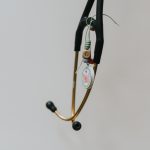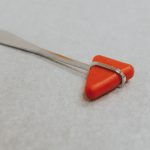Share
A Message from Your Council – Remembrance Day Message
Go back to MessengerA special Remembrance Day message from Dr. Graham Campbell
Remembrance Day 2020 is upon us. Taking time for reflection seems particularly pertinent this year, which has proved to be a challenging year for Alberta’s physicians and surgeons.
When I was asked by Dr. McLeod to pen a note to the profession about Remembrance Day, I wondered how I could make it relevant to the current profession while still being reflective of the past. I was asked because my grandfather was a soldier of the Great War; initially a corporal and medic who served with the 50th Battalion from Calgary. As Lt. Col. Patton wrote last year, he was one who “shared in the dangers and filth of the trenches, who searched the battlefield under artillery bombardment, machine gun fire and poison gas to find the wounded and carry them back to medical care.” Fortunately, he survived the war, earning his commission as an officer and returned home to begin again as a teacher. Though he died before I was born, his observations and experiences live on in a number of diaries that I retrieved to inspire this note. The volume I chose was labeled Amiens 1916. It started in August 1916 and went to the end of the year. The juxtaposition of moments of beauty or delight one moment, with vivid but seemingly mundane descriptions of carnage and gore the next, was revealing and powerful. For example, after describing an unexpectedly good meal in France away from the front, there is a note a few days later where he describes a crater 260 paces around and 50-to-60-feet deep, “at the bottom bayonet sheaths and British helmets galore riddled with bullet holes. Portion of leg in boot. Two legs sticking out of the bank about half way up. Broken rifle. Clothing kit. Pte. R Moran, C Company, 6 Wilt, 102 Brigade, 21st N.F., 34th Div.”
However, it was reflection on the context of the time and state of the war when his remarks were entered that bear relevance to the strains faced today. In 1916, the war had proven far worse than anticipated at its beginning. It had been nearly two years on the western front, with both sides bogged down in stalemate and both sides suffering grievous losses. The Allied command decided that in order to break the deadlock, a massive assault was required. The thought was that a massive advance would overwhelm defences and once they broke, victory would follow. On July 1, 1916, the Battle of the Somme was launched. On that day, the British army suffered its single greatest loss in battle, with 57,000 British and Commonwealth troops killed, wounded, taken prisoner or missing. From July to November 1916, the Allies suffered over 650,000 casualties including 200,000 dead. Over 24,000 Canadians were killed, wounded or missing during the Somme. The Newfoundland Regiment was decimated at Beaumont Hamel as part of the Somme offensive on July 1. Of the 800 who went into battle, 68 answered roll call the next day; 14 sets of brothers were killed, including four brothers from one family (the Ayres of St. John’s). The Germans called it “das Blutbad” (the bloodbath) and over the course of the Somme, their losses were even higher. The site my grandfather described was written from the midst of this carnage in September 1916. Things were bleak.
But hard lessons were learned in the Somme and this allowed things to change, albeit slowly. In the spring of 1917, Canadians were transferred from the Somme to the Western Front near Vimy Ridge. During Easter that year, they took the ridge on their first offensive as a united Canadian corps, a victory that has been celebrated rightly as a momentous Canadian success.
Similarly in April 1917, at Monchy-Le-Preux, the Newfoundland regiment overcame the odds by holding a hill they had suffered grievously to obtain. After reaching the high ground, they were informed 200-300 Germans were advancing less than 500 metres away. The unit commander, Lt. Col. Forbes-Robertson, collected headquarter staff, led them under fire to a trench on the village outskirts and held off the Germans with rapid bursts of rifle fire. The Germans went to ground believing they were faced by a powerful opposition. In fact, 10 men were all that stood between the Germans and Monchy, one of the most vital positions on the battlefield. Though the Regiment suffered 460 casualties and 153 were taken prisoner, they had prevented disaster and set the path for a greater victory.
After Vimy, there followed an unbroken string of hard-fought victories for Canadians at Hill 70, Passchendaele and then in 1918, the battles of the last 100 days including Amiens, Arras, Cambrai and Mons, where multiple Canadian offensives were instrumental in finally pushing the German defenses back and winning the war.
There is pain and anguish when there is loss. 2020 has been a year to show that to the world again. However, it is useful to remember that times have been much bleaker, especially for those on the front in the depths of war in 1916. And from that, Canadians arose to victory and emerged stronger and more independent in the world. As we face the challenges of today, remember the challenges faced by those who came before. Remember those who faced such adversity, admire their perseverance and celebrate their success, for it led to the opportunities we enjoy today. And when faced with challenges that seem insurmountable, remember that you can help those who follow by simply carrying on, learning from the past to improve your responses to the future and applying that knowledge. From that determination, better things will eventually follow. Take a moment to remember this Nov. 11 those who fought for a better future, and let it inspire our approach to adversity today.




















Comments for this post are now closed. If you would like to share your feedback on this topic, please email support@cpsa.ca.